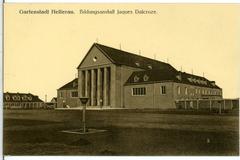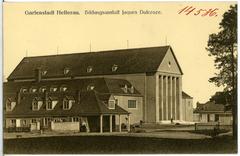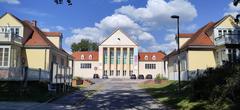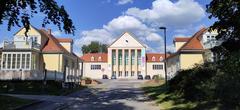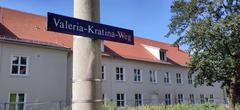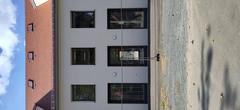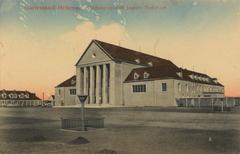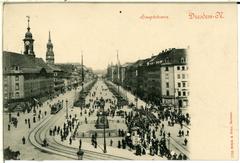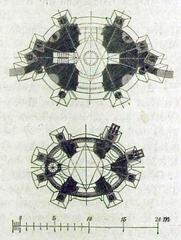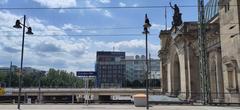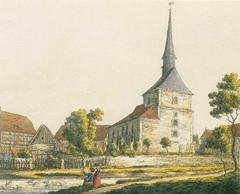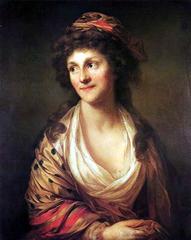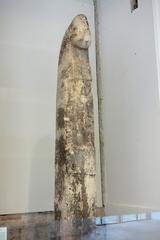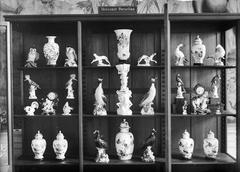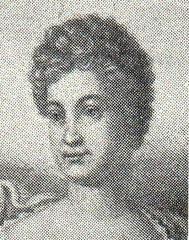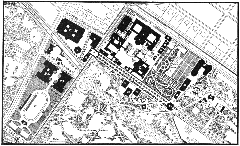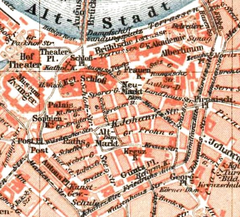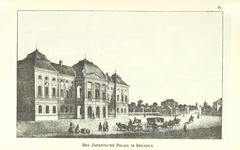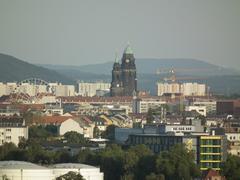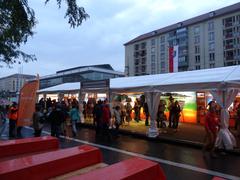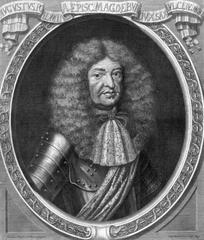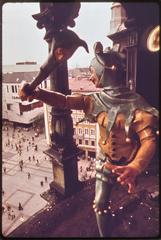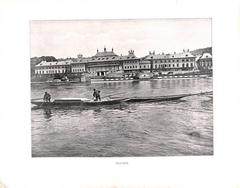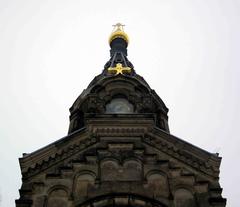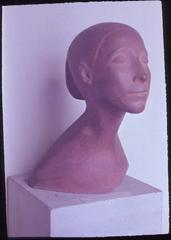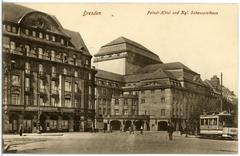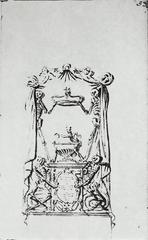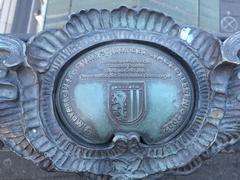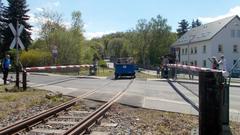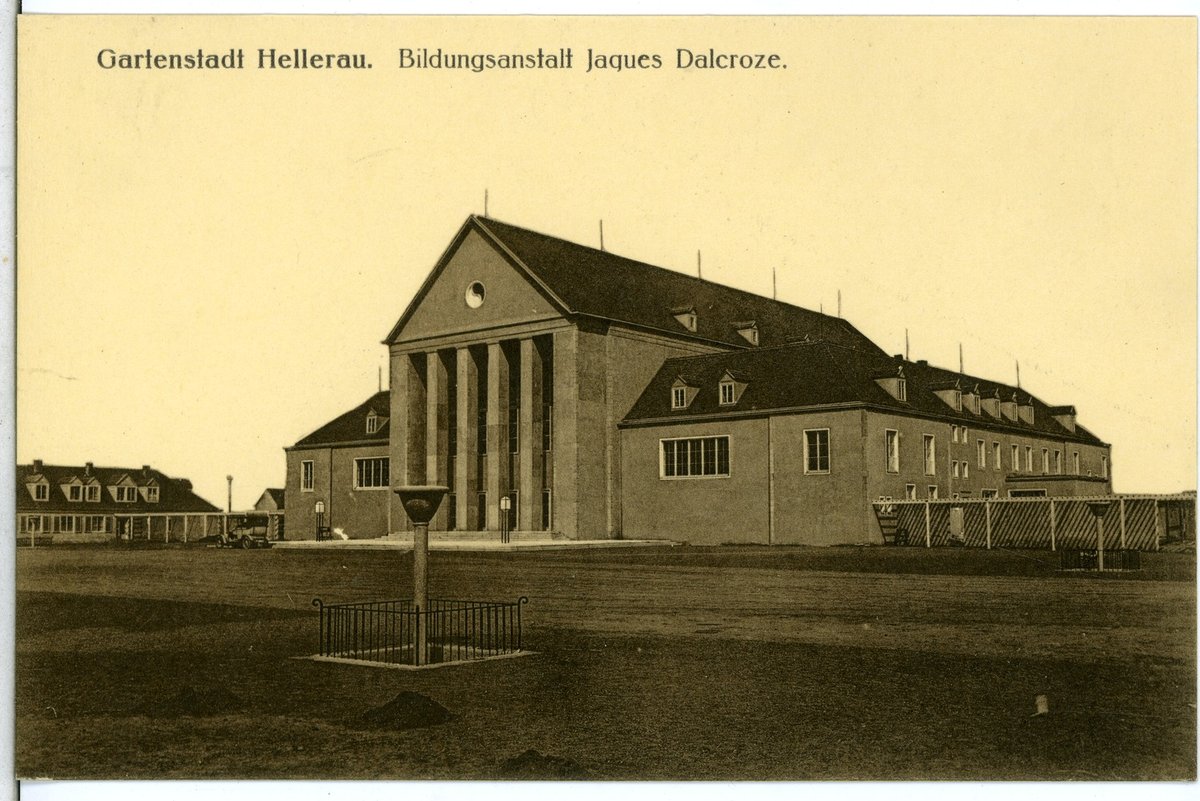
Festspielhaus Hellerau Dresden: Visiting Hours, Tickets, and Visitor Guide
Date: 15/06/2025
Introduction: Historical and Cultural Significance
Located in the innovative garden city of Hellerau on Dresden’s northern edge, Festspielhaus Hellerau stands as a monument to early 20th-century modernism and avant-garde experimentation. Founded between 1911 and 1912, this architectural and cultural icon was envisioned as a center for progressive arts, rhythm, and movement, designed by architect Heinrich Tessenow, music educator Émile Jaques-Dalcroze, and stage designer Adolphe Appia. With its groundbreaking stage design and acoustics, Festspielhaus Hellerau has influenced the development of modern theatre and performance spaces around the world.
The building’s history reflects the tumultuous changes of the 20th century—from its founding as a beacon of progressive culture, through dark periods of Nazi and Soviet military use, to its post-reunification revival as HELLERAU – European Centre for the Arts. Today, it is a vibrant venue for contemporary dance, music, theater, and interdisciplinary arts, hosting resident companies like the Dresden Frankfurt Dance Company and acclaimed festivals including CYNETart and the upcoming Dance Platform Germany 2026.
Visitors to Festspielhaus Hellerau engage with both its dynamic present and complex past, set within the visionary context of Germany’s first garden city. Accessibility, guided tours, and interactive experiences such as audio walks enrich every visit, while Dresden’s nearby attractions round out a memorable cultural itinerary.
This detailed guide provides up-to-date information on visiting hours, ticketing, accessibility, historical context, and current programming to help you plan a meaningful visit. For the latest updates, consult the official HELLERAU website and related resources (source 1, source 2, source 3).
Contents
- Welcome to Festspielhaus Hellerau: Dresden’s Historic Cultural Gem
- Practical Visitor Information (Hours, Tickets, Accessibility, Getting There)
- History of Festspielhaus Hellerau
- Architectural Highlights and Visitor Experiences
- Year-Round Cultural Programming and Festivals
- Frequently Asked Questions (FAQ)
- Plan Your Visit and Stay Connected
- Useful Links & Further Reading
1. Welcome to Festspielhaus Hellerau
Set within the leafy environs of Hellerau, the Festspielhaus offers a remarkable blend of heritage, architecture, and contemporary arts. Whether you’re a history buff, an architecture enthusiast, or simply seeking a unique experience in Dresden, this guide provides all the essentials for your visit.
2. Practical Visitor Information
Opening Hours
- Visitor Center: Monday to Saturday, 11:00 AM – 6:00 PM (seasonal variation on Sundays and holidays).
- General Venue Access: Tuesday to Sunday, 10:00 AM – 6:00 PM.
- Event Times: Vary by performance or festival. Always check the official website for up-to-date details.
Tickets and Guided Tours
- General Admission: Entry to the building and some exhibitions is free.
- Performances & Special Events: Tickets required; purchase via the HELLERAU ticket portal or at the venue.
- Guided Tours: Public tours (German) every Friday at 12:30 (€6/4). Group and English-language tours are available by appointment.
- Garden City Tours: Explore the architecture and history of Gartenstadt Hellerau with expert guides.
Accessibility
- Full wheelchair access, adapted restrooms, and assistive listening devices available.
- Please contact the visitor center in advance for tailored support.
Getting There
- Public Transport: Tram lines 3 or 7 to Hellerau Gartenstadt stop; 20 minutes from Dresden city center.
- By Car: Parking available on site and nearby (may be limited during events).
- Cycling/Walking: Bike racks and green surroundings make it ideal for cyclists and walkers.
3. History of Festspielhaus Hellerau
Origins (1909–1914)
Conceived as the cultural heart of the pioneering Hellerau Garden City, Festspielhaus Hellerau was constructed as a center for Émile Jaques-Dalcroze’s innovative rhythm and music education. The building’s revolutionary stage design by Adolphe Appia fostered new forms of immersive performance (static.hellerau.org).
Interwar Period (1914–1933)
World War I disrupted the momentum of artistic innovation. Despite internal changes, the Festspielhaus continued as a hub for reformist education and life reform movements until political upheaval in 1933 changed its direction.
Nazi and Soviet Eras (1933–1992)
Under the Nazis, the building was converted for military and police training, a somber period that erased much of its cultural mission. After WWII, the Soviet army occupied the site for military and hospital use, keeping it closed to the public for nearly five decades (source 2).
Restoration and Renewal (1992–Present)
Following the Soviet withdrawal, the Free State of Saxony led extensive restoration efforts, transforming the Festspielhaus into HELLERAU – European Centre for the Arts. The venue now hosts acclaimed festivals, leading dance companies, and innovative interdisciplinary projects, reclaiming its avant-garde legacy (source 1).
4. Architectural Highlights and Visitor Experiences
Architectural Innovation
- Exterior: Designed by Heinrich Tessenow, the Festspielhaus features a minimalist, whitewashed facade and monumental rectilinear form. The building’s gabled roof trusses and large windows create an atmosphere of transparency and structural honesty.
- Interior: The Great Hall offers a flexible, column-free performance space, with Appia’s revolutionary lighting and staging dissolving boundaries between performer and audience (kvl.cch.kcl.ac.uk).
Urban Context
- The Festspielhaus is at the heart of Germany’s first garden city, an urban planning model integrating nature, community, and the arts (dresden-stadtfuehrer.de).
Visitor Highlights
- Guided tours reveal hidden historical layers, from avant-garde origins to postwar restoration.
- Audio walks (such as the “BALANCE” route) let you explore the district’s social and architectural heritage at your own pace (HELLERAU – Guided Tours).
- Photography: The interplay of clean architectural lines, natural light, and landscaped gardens offers superb photographic opportunities.
5. Year-Round Cultural Programming and Festivals
HELLERAU presents over 350 events annually, spanning contemporary dance, experimental music, theatre, and new media art (source 1). Key highlights:
Major Festivals
- CYNETart: International festival for computer-based art and digital culture.
- International Dresden Days for Contemporary Music: Avant-garde music festival presenting premieres and innovative collaborations (Musik Dresden – Veranstaltungen).
- Dance Platform Germany 2026: Biennial showcase of the country’s best contemporary dance (Visit Dresden Elbland – Dance Platform).
Resident Companies
- Dresden Frankfurt Dance Company (formerly Forsythe Company): Internationally acclaimed contemporary dance.
- DEREVO Dance Theatre: Renowned for experimental performance.
Community and Educational Projects
- “Nebenan” Series: Platform for the independent arts, with international partnerships.
- “Landscapes of Motion”: Participatory youth projects.
- Watch Out! Festival: Programming for families and young audiences.
Thematic Focus for 2025
The 2025 season explores “Wer sind wir und wer bin ich” (“Who are we and who am I”), engaging with identity and community through performances, residencies, and collaborative projects (Tag24 – New Season).
6. Frequently Asked Questions (FAQ)
Q: What are the visiting hours?
A: Visitor Center: Mon–Sat 11:00–18:00. General access: Tue–Sun 10:00–18:00. Special events may affect hours.
Q: How do I buy tickets?
A: Purchase online via the HELLERAU ticket portal or at the visitor center.
Q: Is the venue accessible?
A: Yes. Full barrier-free access, accessible restrooms, and assistance available.
Q: Are guided tours available in English?
A: Yes, by group appointment.
Q: How do I get there?
A: Tram 3 or 7 to Hellerau Gartenstadt. Parking and bike racks on site.
Q: Are there nearby attractions?
A: Hellerau Garden City, Dresden city center (Semperoper, Kulturpalast), and local dining options.
7. Plan Your Visit and Stay Connected
Stay up to date with programs, tickets, and special events via the official HELLERAU website, and follow their social media channels. Download the Audiala app for audio tours and real-time updates. For a deeper dive, explore virtual tours and related guides on Dresden’s historical and cultural sites.
8. Useful Links & Further Reading
- Official Festspielhaus Hellerau website
- Dresden tourism
- Virtual tour of Festspielhaus Hellerau
- History and architecture
- Guided tours at HELLERAU
- Upcoming events and ticket portal
- Dance Platform Germany 2026
- Tag24 – New Season
Summary and Travel Tips
Festspielhaus Hellerau is a unique fusion of modernist architecture, layered history, and vibrant contemporary culture. Its role as a cradle of avant-garde performance, its resilience through the twentieth century, and its current standing as a hub for interdisciplinary arts make it a must-visit destination in Dresden. With robust accessibility, regular guided tours, and a packed calendar of innovative events, Festspielhaus Hellerau invites visitors to experience the dynamic interplay of heritage and innovation at the heart of Gartenstadt Hellerau.
Plan ahead by consulting HELLERAU’s official website, and make use of available digital apps and guides to enhance your visit.
Sources
- Festspielhaus Hellerau: A Visitor’s Guide to History, Culture, and Practical Information (https://www.hellerau.org/en/)
- Visiting HELLERAU Dresden: History, Tickets, Hours & Cultural Guide (https://static.hellerau.org/wp-content/uploads/2020-07-14_downloadhistory_hellerau.pdf)
- Dresden Tourism: City of Music and Cultural Attractions (https://www.visit-dresden-elbland.de/en/dance-city-dresden)
- Festspielhaus Hellerau Visiting Hours, Tickets, and Events Guide (https://www.hellerau.org/en/guided-tours/)
- Tag24. Das Programm steht im Festspielhaus HELLERAU: Startet die neue Saison (https://www.tag24.de/dresden/dresden-veranstaltungen/das-programm-steht-im-festspielhaus-hellerau-startet-die-neue-saison-2945404)
